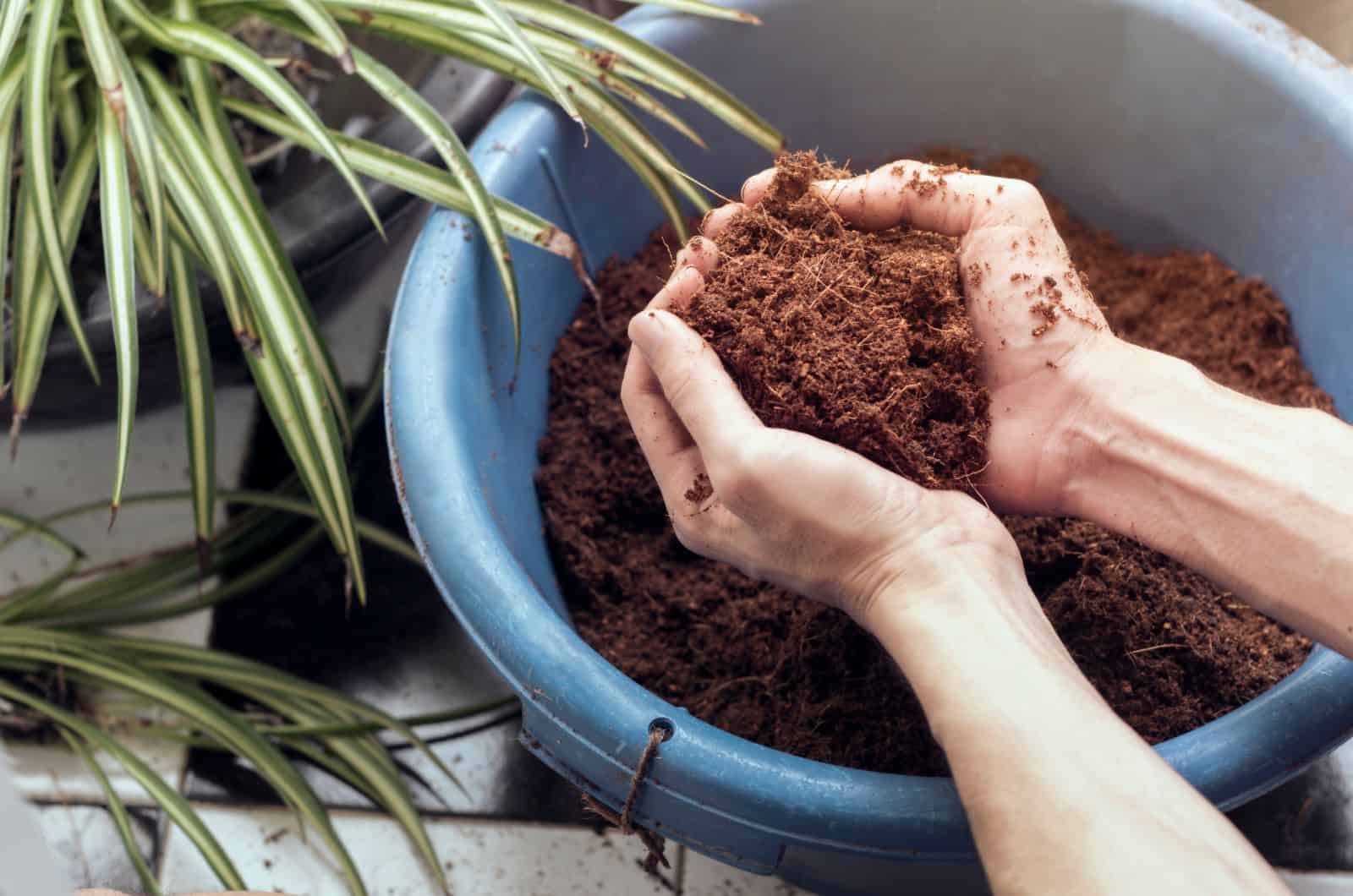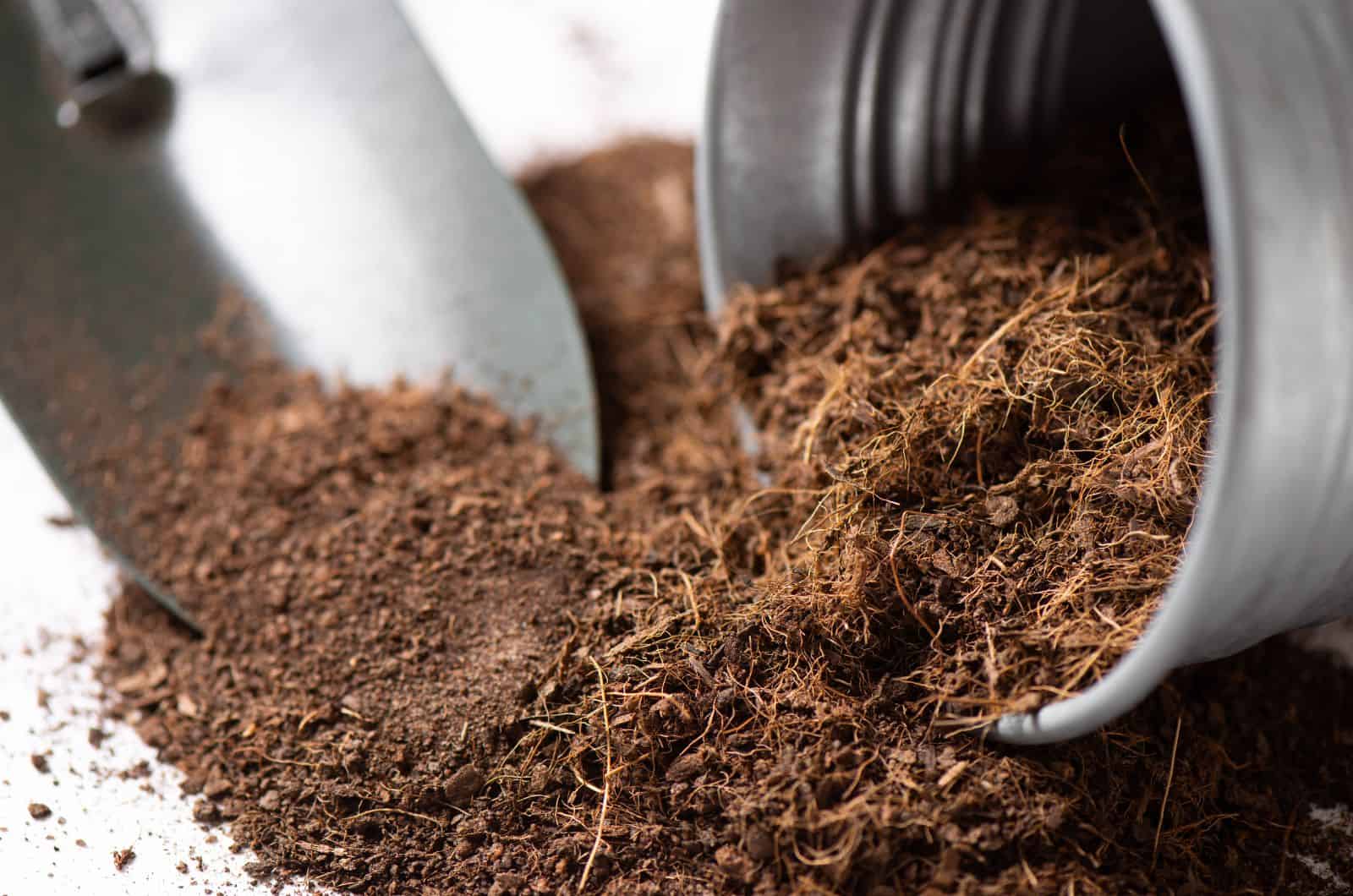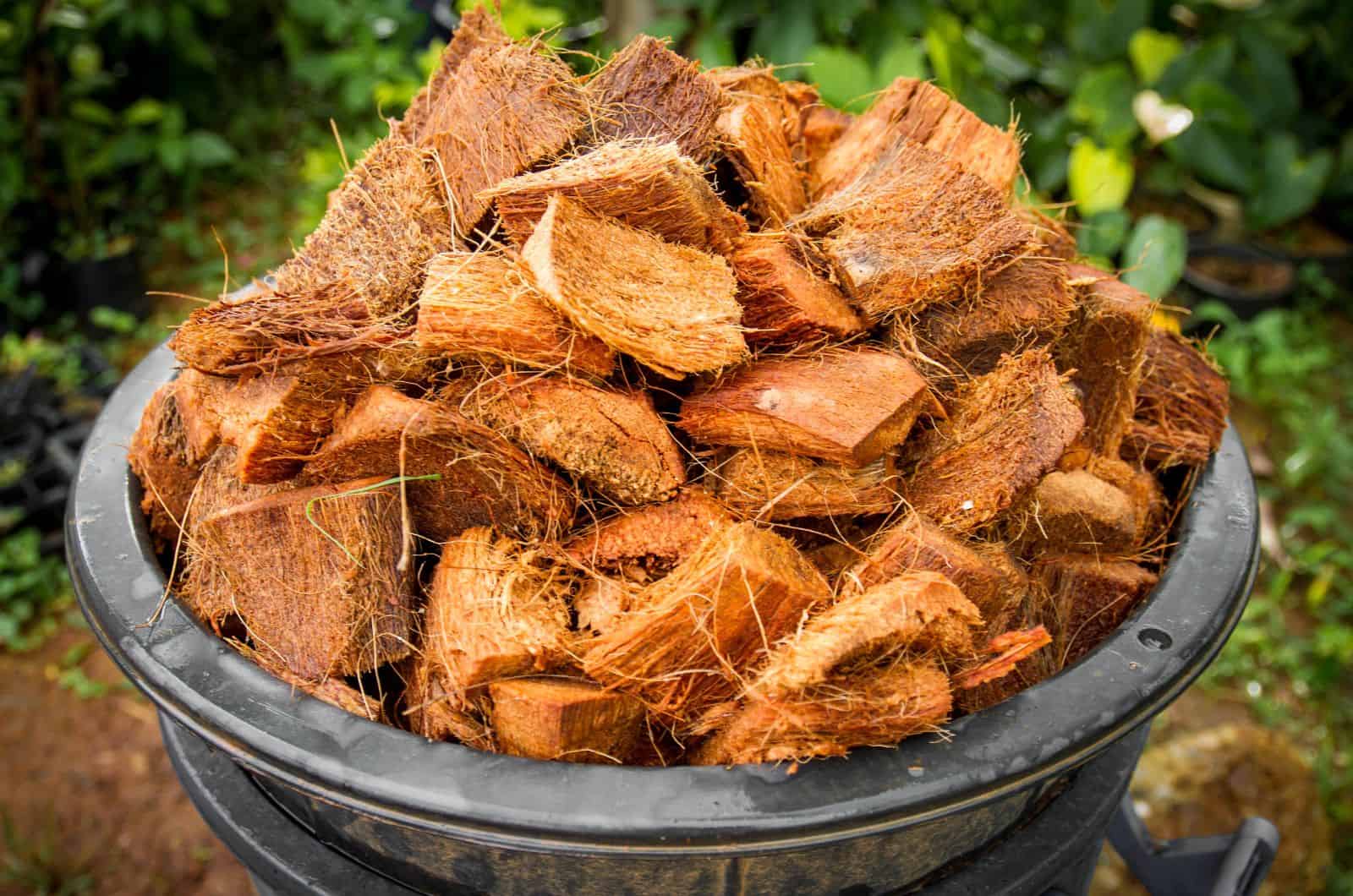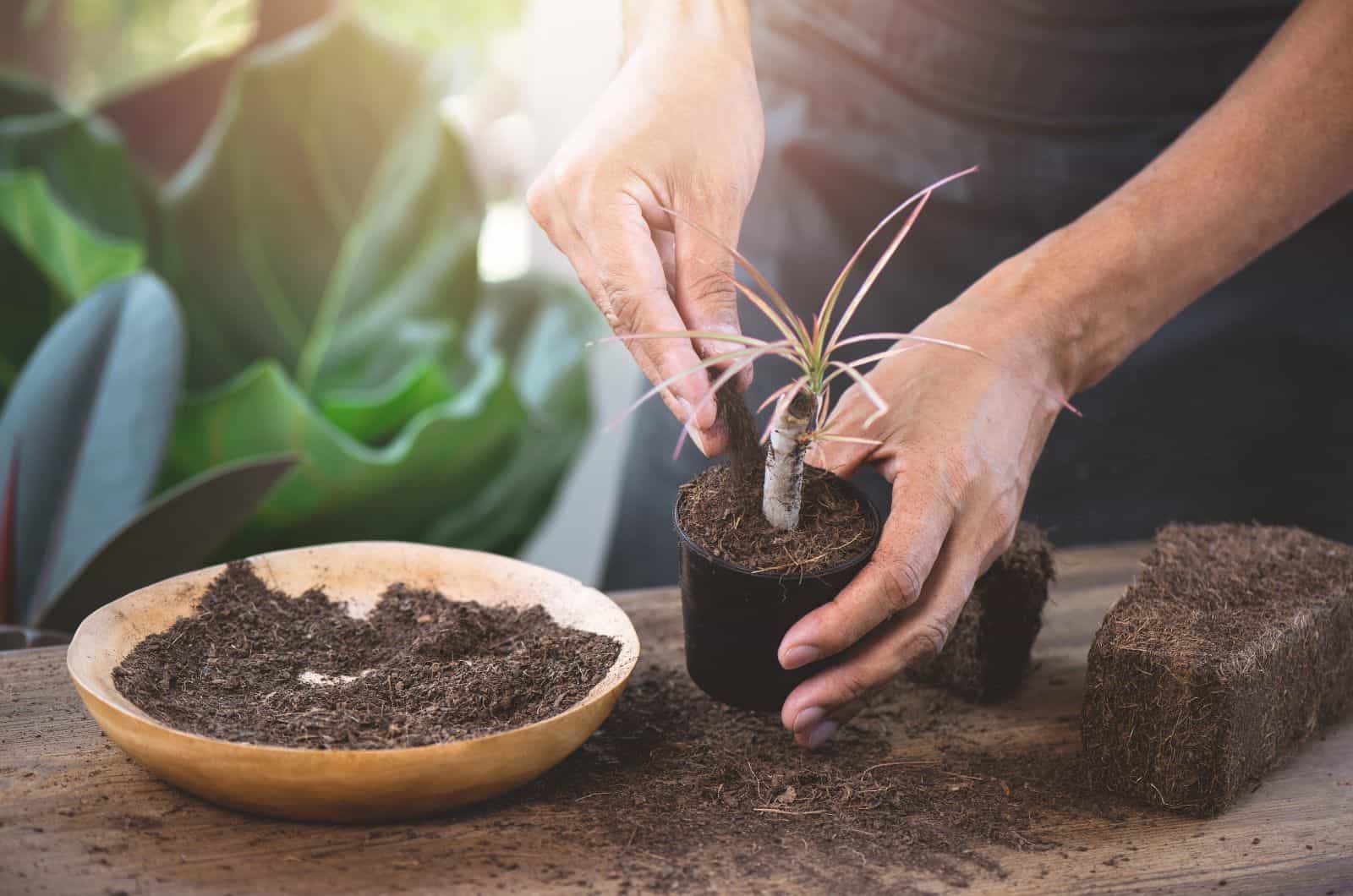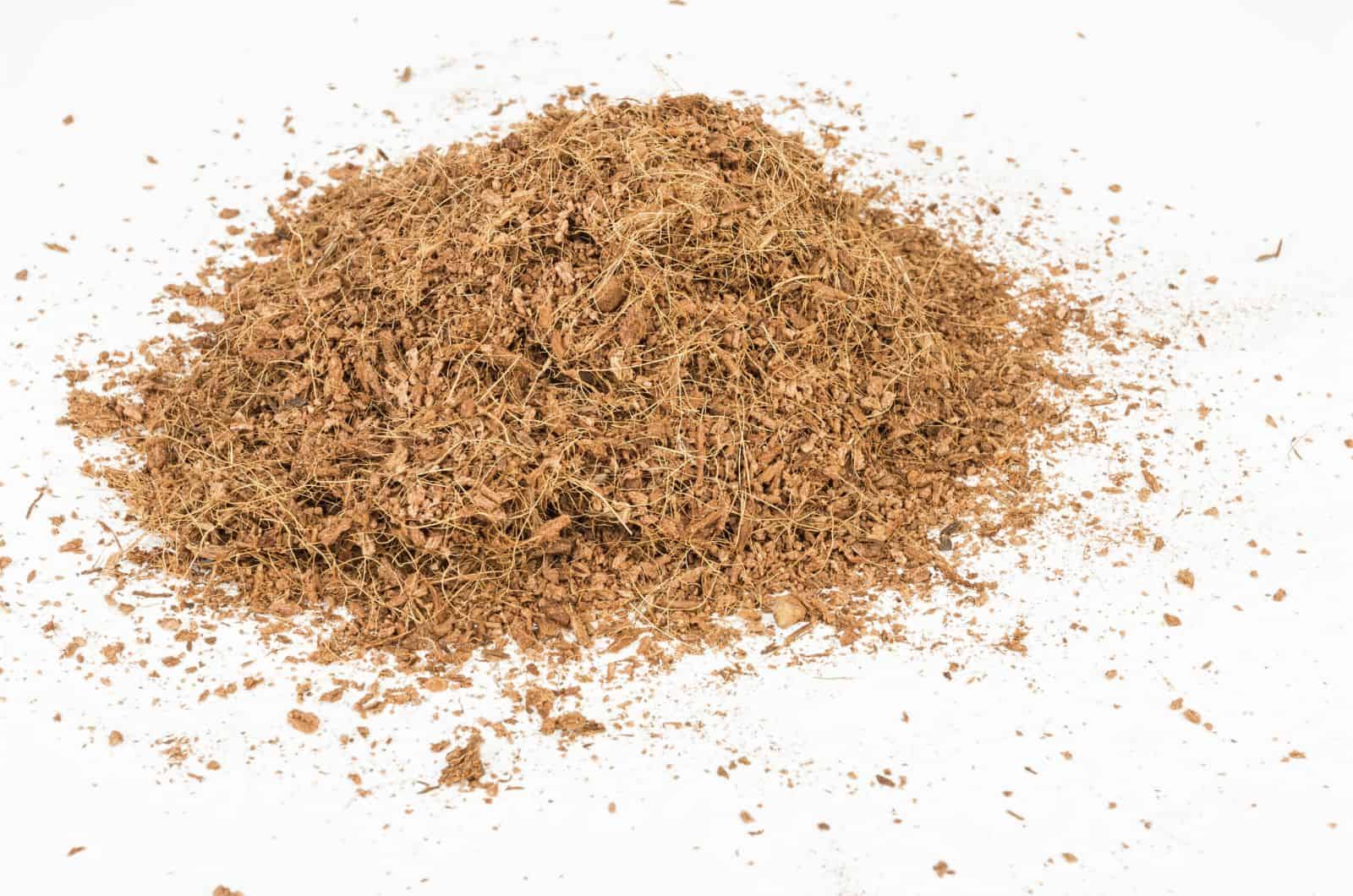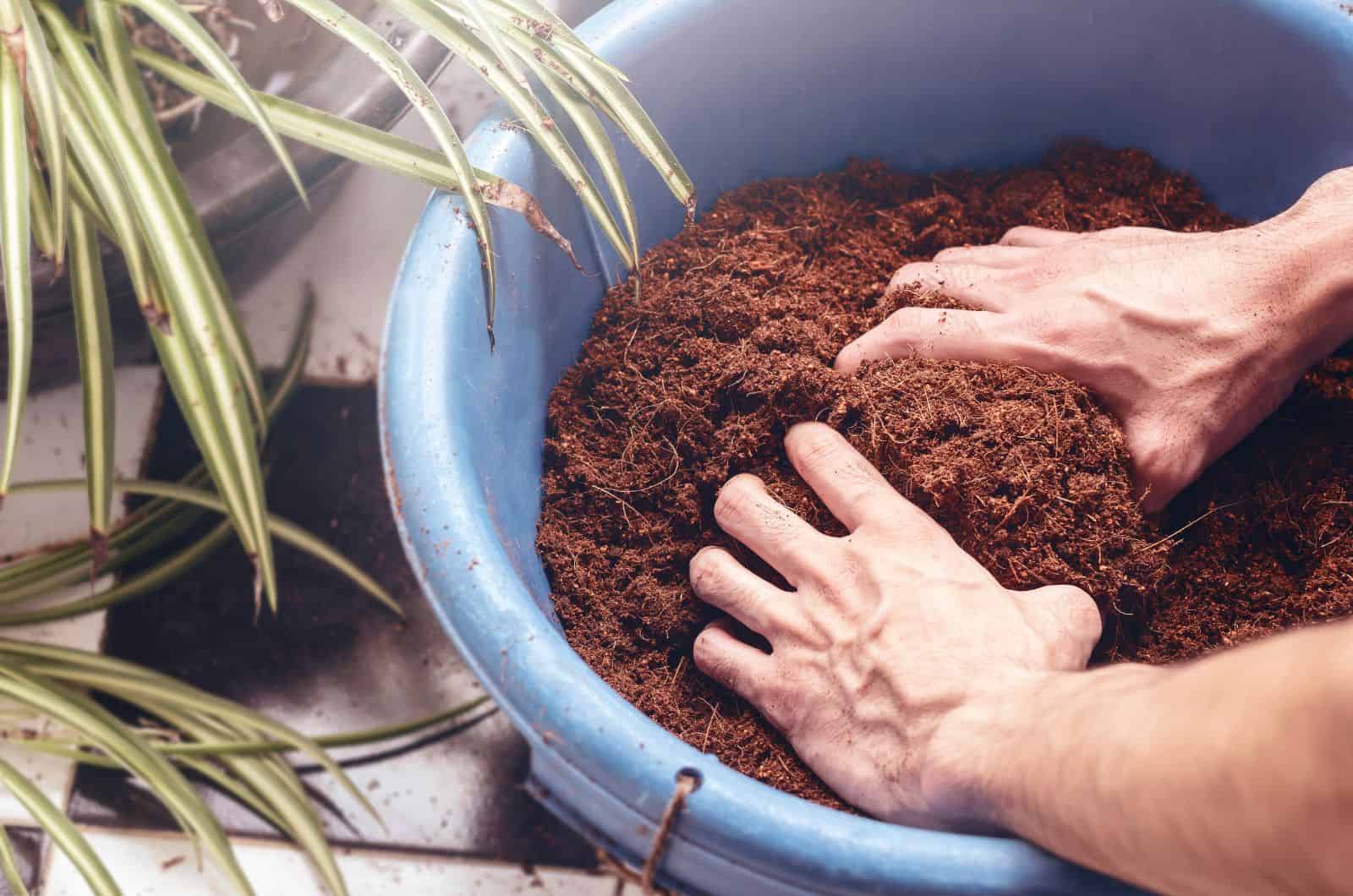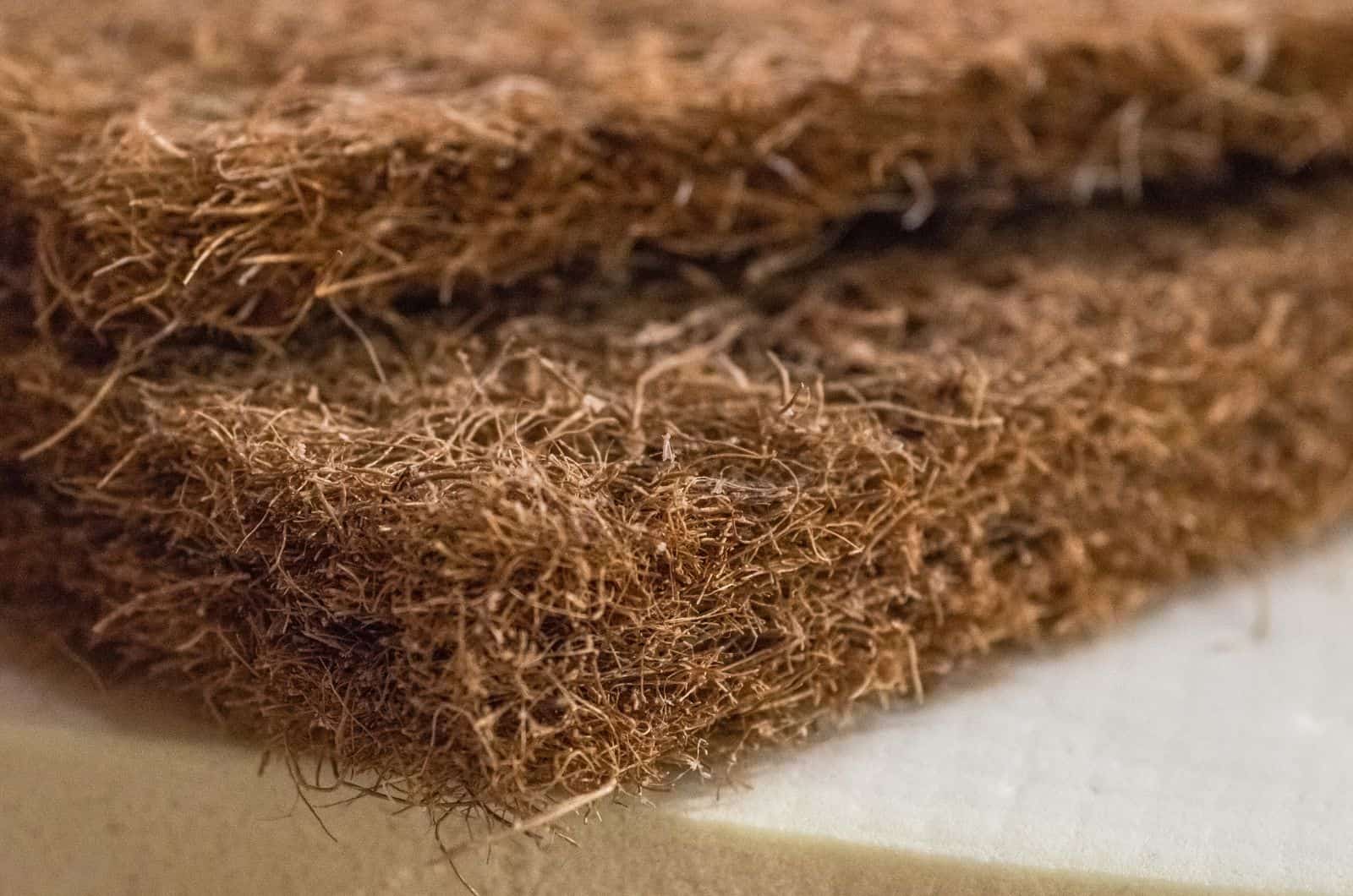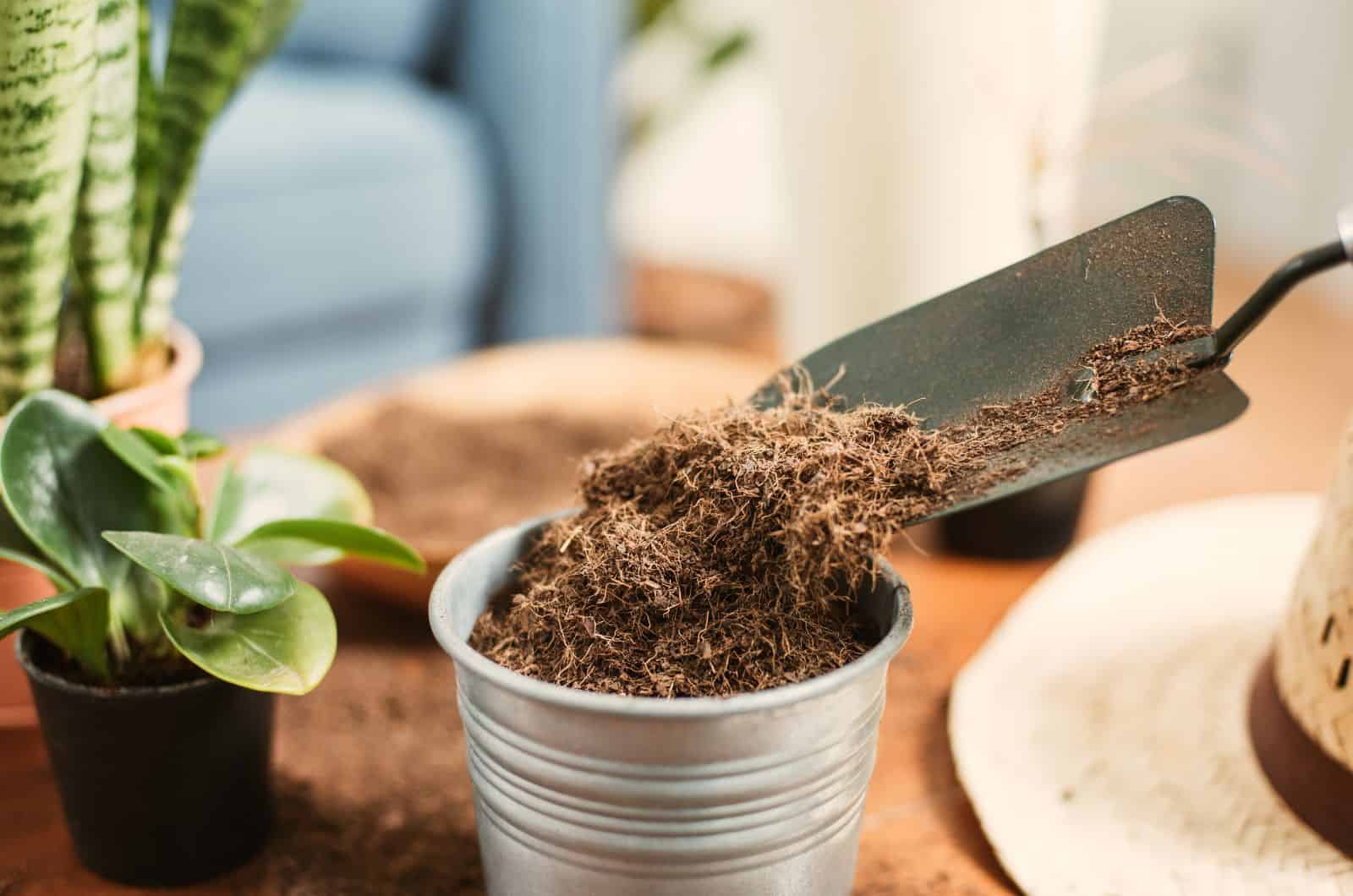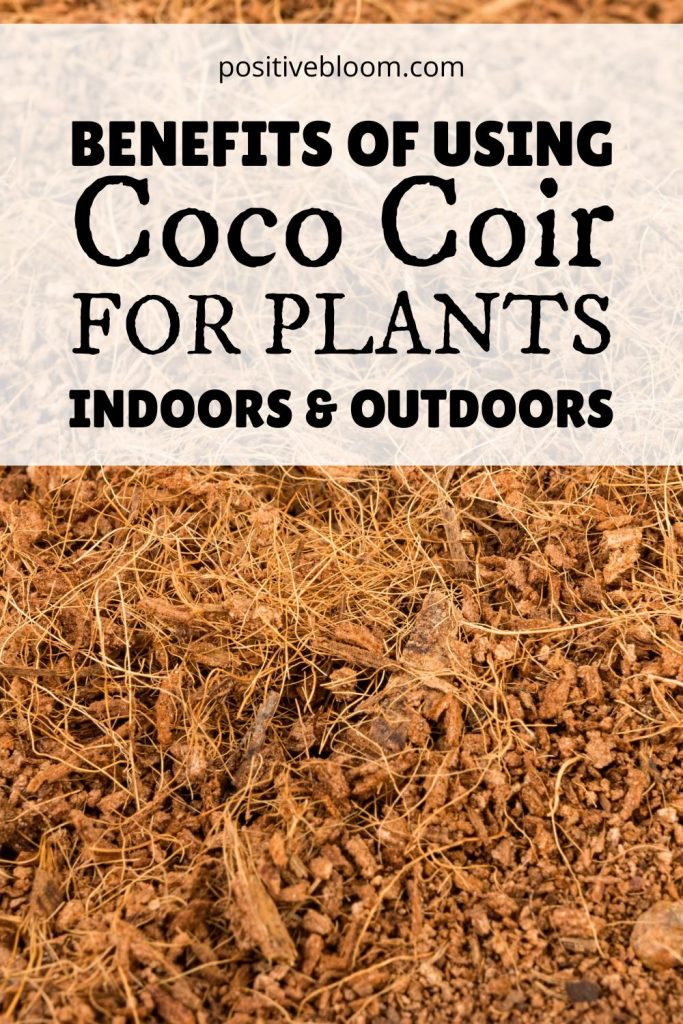Coconut coir, otherwise known as coco coir, is a great growing medium that has become very popular in gardening over the past few seasons.
Coconut coir is a natural, organic material formed of coco fiber that can be used as a potting medium in your garden. For example, you can use pure coconut husk to grow orchids, as part of the soil mixture, and as mulch to protect plants or just make them seem nicer.
Coco coir is great for hydroponic systems as well!
Coco coir is more sustainable and eco-friendly compared to peat moss, which usually takes about a hundred years to regenerate. Additionally, it is used for seed starting and encouraging plant growth, and it even yields tastier crops.
You see, there are plenty of reasons you should use coco coir for plants in your garden.
Keep reading to find out more information!
Coco Coir For Plants
Before we look into using coco coir for your plants, we are first going to find out what coco coir actually is and how it’s made.
Let’s dive right in!
What Is Coco Coir?
The byproduct formed from the interior fibers of coconut husk is known as coconut coir. This is a great alternative for peat moss, mostly because one coconut tree can yield about 200 coconuts every year!
Coco fibers, coco pith, and coco chips are the three types of coco coir.
Coco chips offer high water retention qualities, and coconut fibers enhance soil aeration.
Coco coir can also be found in peat form. The phrases coco coir and coco peat do not refer to the same material, despite the common misconception that coco coir and coco peat are the same things. Water absorption, pH level, nutritional content, and raw material are a few examples of the differences.
Coco Pith
This particular variety of coco is widely used in hydroponics because it effectively holds water and can keep your plants’ root systems well-hydrated.
It looks like peat moss, but you can tell it apart because of its distinctive brown color. You won’t need to worry about it being too acidic for your herbs and vegetables because its pH level is balanced.
Coco Coir Fibers
Ground coconut husk is another name for coconut fiber. You won’t mistake it for coco chips or peat because of its distinctive stringy appearance.
It can be used to create coir planters, added to pots to aid in the sprouting of seeds, or utilized after transplantation because it will adequately aerate the area around your plant’s roots.
Coco Chips
Coconut chips can get lodged between hydroponic plants because they are too large. However, they provide good drainage, aeration, and water retention, which is why they make the ideal addition to potting soil.
They are typically used by growers as mulch in their indoor and outdoor gardens, and to help plants drain better.
How Is Coco Coir Made?
High-quality coconut coir has to go through extensive processing to be ready for hydroponics and garden use. They must first take the coir out of the coconut shells. The husks are softened and made loose by soaking them in water (either freshwater or tidal water).
The coconut coir will absorb a lot of salt if it is soaked in tidal waters, which will then need to be washed off by the producer.
They are then taken out of the water bath and allowed to dry for over a year. After the long process of drying the coir, it is organized in bales. Then, these bales are cut up and processed into a variety of coconut coir products, such as chips, “croutons”, coco coir bricks, coir pots, and traditional crushed coconut coir.
Coco Coir Pros
Some of the benefits of coco coir include:
• The pH levels range from slightly acidic to neutral, making it a great substrate for growing a variety of vegetables.
• This soilless media is free of bacteria, weed seeds, and other pathogens, and has antifungal properties that control fungi and pathogens.
• Improves water absorption, providing immediate hydration.
• It is a renewable resource.
• Excellent fertilizer absorbent — aids in absorbing crucial nutrients like potassium, phosphorus, and nitrogen.
• The fine aeration properties for plant roots (they create air pockets when combined with the soil).
• Great for moisture retention and soil drainage.
• Prevents root rot.
• Can be used as a mulch alternative.
Coco Coir Cons
Now, let’s look at some of the drawbacks of using coco coir:
• High price compared to vermiculite or perlite.
• Lack of nutrient content.
• The pH levels must be constantly monitored.
• Unable to fully biodegrade when placed in landfills.
Where To Use Coconut Coir
After reading the Coco Coir pros and cons, I’m sure you have been persuaded to try and use coco coir in your garden!
This can include container gardening and hydroponic gardening as well.
Keep reading to see where you can use coconut coir as a soil amendment.
Coco Coir For Houseplants
Because of its great moisture absorption and aeration properties, coco coir makes an excellent addition to any houseplant potting mix. It also improves soil drainage, which is crucial for most indoor plants – especially the ones that are easy to overwater.
For indoor gardening, you will need the smallest coconut coir brick you can get, so you won’t even spend much money.
Now, we are going to cover the basics of using a coir mix for different types of plants.
Hanging Plants
Most hanging plants are grown in hanging baskets that contain basket liners. Therefore, there is a certain procedure when it comes to using coco coir as a soil amendment.
The coconut coir does not directly support plant growth. Instead, it lines the basket or planter, resulting in a breathable, beautiful, and organic pot that is far lighter than alternatives made of porcelain.
The coir secures the potting material while also holding onto water, which is then gradually released to the plants. Coconut coir is porous, so using it as a basket liner also makes it simpler for plants to absorb oxygen.
Here is how you do it:
1. Line the basket with a coir fiber first.
2. Add the growing medium (for instance, 50/50 of perlite and rehydrated coir).
3. Put your plants in the soil. Ensure the roots are below the soil surface.
4. Water your plants thoroughly.
Climbing Plants
Coco coir can be manufactured into a pole as well, which makes it a great moss pole alternative!
These poles used for climbing plants actually have coco coir fibers wrapped around them. The plant seeds are usually planted at the base of the pole. The plant will wrap its way around the pole, taking advantage of the additional support and moisture the coir provides.
Container Plants
Container plants are probably the most popular in indoor gardening. There are a lot of decorative pots that can be used as additional home decor that also provide good drainage and an overall great environment for cultivating plants.
Coco coir can be used as a soil additive or it can be added to the bottom of the pots. When adding a layer at the bottom, you won’t have to worry about watering as much because the coir retains the moisture your plants need.
Additionally, it can also be used as a soil topper to prevent evaporation. You can add it around the base of the plant or add a few inches to the bottom of the pot before adding potting soil.
Coco Coir For Seed Germination
Seed germination is probably the most important step when growing vegetables from seeds. If the seed doesn’t germinate, we wouldn’t see any sprouts, leaves, plants, or fruits!
Luckily, soil discs made out of coconut coir pellets are here to save the day!
These discs are tiny, compressed tablets with a diameter of roughly two inches. When wet, they swiftly expand, sit flat, and pack well into trays. Because they allow for root development and have a biodegradable construction that makes transplanting simple, coco coir discs provide a great medium for starting seeds.
Here is how you use coco coir for seeds:
1. First, put the seed in the center of the disc.
2. Then, put the disc in a shallow pot.
3. Start adding water slowly. You will notice that the disc swells because it is absorbing the water.
4. As more water is added to the pan as necessary, the seed will soon begin to sprout and grow.
5. Prepare soil for the seedlings once they have grown enough to be ready for transplanting.
6. Place the seedling in the ground in a hole that is just a little bit bigger than the swollen disc.
7. You should cut the netting off your coco coir discs, if there is any, to allow the roots to escape.
Coco Coir For Hydroponic Gardening
Coco coir for hydroponic gardening is one of the most popular gardening practices at the moment. This isn’t surprising because coco coir has so many benefits that make it ideal for hydroponic systems!
It is pH neutral, slow to disintegrate, retains water effectively, aids in nutrient transmission to the plant’s root zones, and contains anti-fungal properties — all it takes to keep a plant happy.
Always remember to rinse this material thoroughly before using it because it includes a lot of salt content, and saltwater could harm your plants.
You can always check the amount of total salts (EC) in the runoff if you’re unsure of how long to wash your coir. If there’s still a lot of it there, you should wash it for a few more days (5-7 days should usually do the trick).
It is crucial to soak the coir in a lot of water after rinsing (about three parts moisture to one part coconut coir). The material will begin to absorb some of the liquid after about 30 minutes. At that point, you can add it to your hydroponics system.
Your herbs and vegetables can be planted once the moisture has evaporated.
To ensure that the coir promotes rather than restricts plant growth, it must always be kept moist, so water it frequently!
Additionally, coco coir lacks specific nutrients, so you should routinely feed your plants with a solution designed for this media.
The pH level should also not be overlooked. It should always be between 5.8 and 6.2 in order to give the best conditions for nutrient and water absorption.
Coco Coir For Garden
You can add coco coir to your garden soil as well!
For starters, you won’t have to worry about watering as much because of coco coir’s great moisture retention abilities.
Onions, cauliflower, spinach, bok choy, tomatoes, cucumbers, herbs, kale, strawberries, Swiss chard, and many other vegetables thrive best in coco coir.
Before you add coco coir, make sure to check the soil you already have in the garden and how you can combine coir with it. For instance, it makes clay soil lighter, and sandy soil is a bit drier, so adding coco coir would definitely improve the moisture.
Coco coir has little nutritional value, so it’s essential to add nutrients like potassium, nitrogen, and phosphorus. You can add plant food or organic fertilizer, but because coco coir has excellent absorption capabilities, there is a chance that you may overfertilize your vegetables. Combining equal amounts of coco coir and compost is another method.
How To Prepare Coco Coir
Coco coir does not contain nutrients, so it must be combined with either compost or certain fertilizers. The fact that this material has a high cation exchange capacity and can store and release nutrients quickly is one of its advantages.
However, because coconut coir prefers to retain these nutrients rather than release them, it can deprive your plant of calcium, magnesium, and iron.
You shouldn’t use conventional fertilizers on this material because it might have greater amounts of phosphorus and potassium.
However, coconut coir is deficient in calcium, magnesium, manganese, boron, zinc, nitrogen, copper, and iron, so if you see that your plants have nutrient deficiencies, you’ll need to supplement them.
However, the good news is that there are fertilizers developed especially for coco coir, and you can always add nutrients such as nitrogen, magnesium, and calcium by yourself.
You can also add additional materials that improve drainage, such as perlite, because coco coir might occasionally retain too much moisture.
To Sum Up
Using coco coir for plants in your garden is a great way to make your job a bit easier and yield better crops. With its ability to promote seed germination and resistance to pathogens, coco coir can help your plants grow and develop more effectively. Additionally, it has excellent aeration and water retention capabilities.
What’s also great is that you can use it for houseplants, fruits, and veggies, as well as in hydroponics gardening. Therefore, it is definitely worth the price!
I hope this article was helpful.
Until next time!
Like this post? Share or pin it for later!

